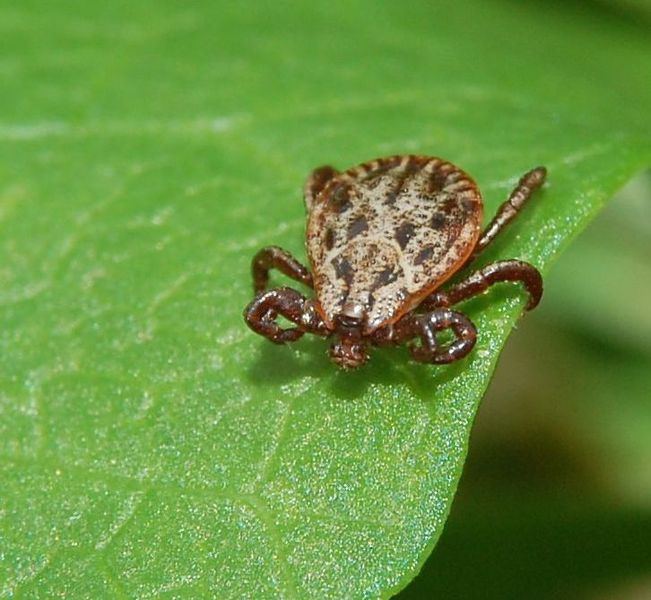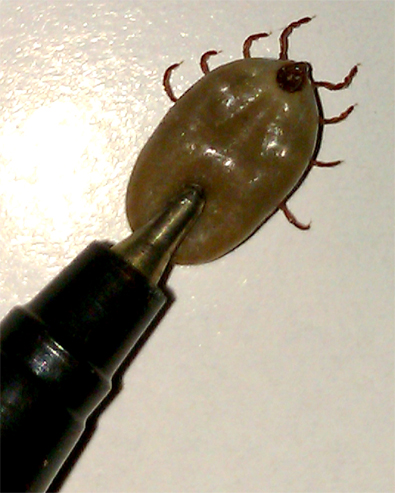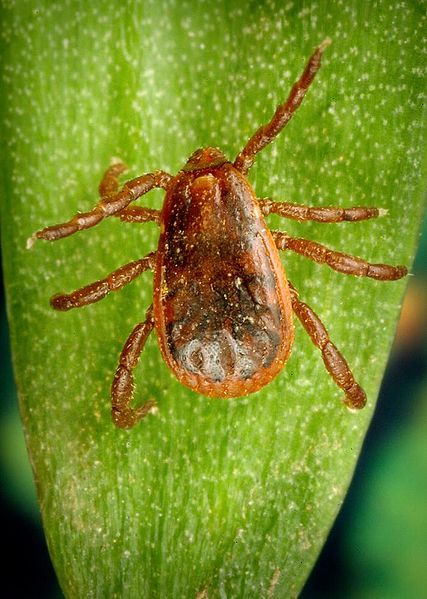Habitat
Because Babesia canis requires a reservoir, or host, to
survive, it may only spread to the geographical habitats in
which its reservoirs live. Babesia canis is confined to the
habitats in which their vector hosts, the ticks, live because it
is through the ticks that Babesia canis
completes its reproductive life cycle and spreads to its canine
host. It is also a long standing host and is not killed easily
by the parasite, unlike the more temporary habitat of the
canine, where resources may be limited.
There are three distinct species of tick that serve as the vector for Babesia canis. Each tick species has originated from a separate part of the world and each species still remains mostly within their own seperate area of origin (Figure 1.). However, each species of tick is not limited to one area of the world and there is much overlap between the ticks' habitats. These vectors include Dermacentor riticulatus, Rhipicephalus sanguineus, and Haemaphysalis leachi. Additonaly, these three tick species each serve as a host to only one subspecies of Babesia canis. They include B. canis canis, B. canis vogeli, and B. canis rossi, respectively. Therefore, each subspecies of B. canis has a georgraphically distginct habitat based on the habitat range of their vector host.
![]()
Figure 1. The endemic areas of the three subspecies: B. canis canis, B. canis vogeli, and B. canis rossi and the surrounding area experiencing large outbreaks of canine babesiosis. Map adapted by T. Kusiak from Wikimedia commons.
Babesia canis canis
The
subspecies B. canis canis inhabits the tick,
Dermacentor riticulatus. This vector is found predominantly in Europe. Canine
babesiosis caused by B. canis canis has been endemic in several countries in Europe,
including France, Spain, and Hungary, although, other outbreaks have
occurred throughout several European cities (Schoeman 2009, and Uilenberg et al.
1989)
Babesia canis vogeli
Babesia canis
vogeli parasitizes the tick, Rhipicephalus sanguineus, which is
found in many parts of the world and is commonly known as the brown
dog tick. This tick is found in the southern United States, South
America, Japan, Australia, and South Africa. Although B canis vogeli
is the least virulent of the three, it has become endemic in some
southern states, Brazil, Japan, Australia, and South Africa
(Schoeman 2009).
Babesia canis rossi
Babesia canis
rossi is of larger body and is the most fatal and severe form of
B.
canis (UIlenberg et al. 1989, Shortt, H. E. 1973, and Chauvin et al.
2009). It resides in its vector host, Heamaphysalis leachi, which is
found only in South Africa, where B. canis rossi
is endemic (Schoeman 2009, Shortt 1973, and Chauvin et al. 2009).
A closely related, but smaller, parasite to Babesia canis affects canines and other mammals in much the same way. This species, Babesia gibsoni, is often found in other parts of the world, including Asia, North Africa, the Middle East, and South America. However, several outbreaks of B. gibsoni have occurred in Europe, Australia, and the United States (Schoeman 2009). This species may affectt some canines similarily, but is most prevalent as a parasite in bovine species.
Continue on to the Babesia canis reproduction! Home




